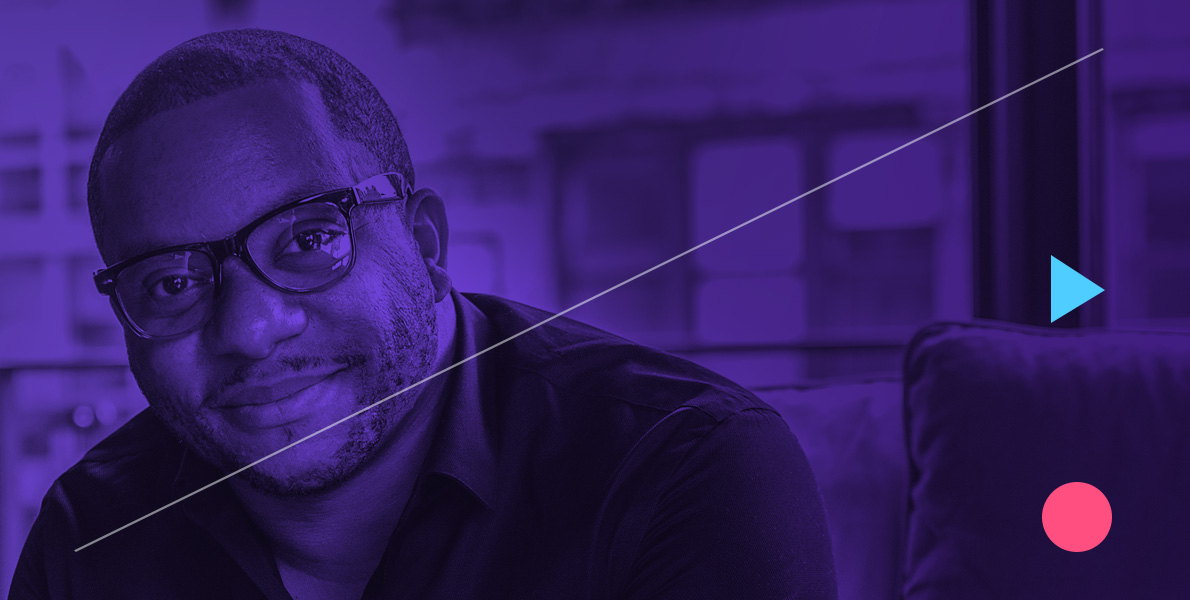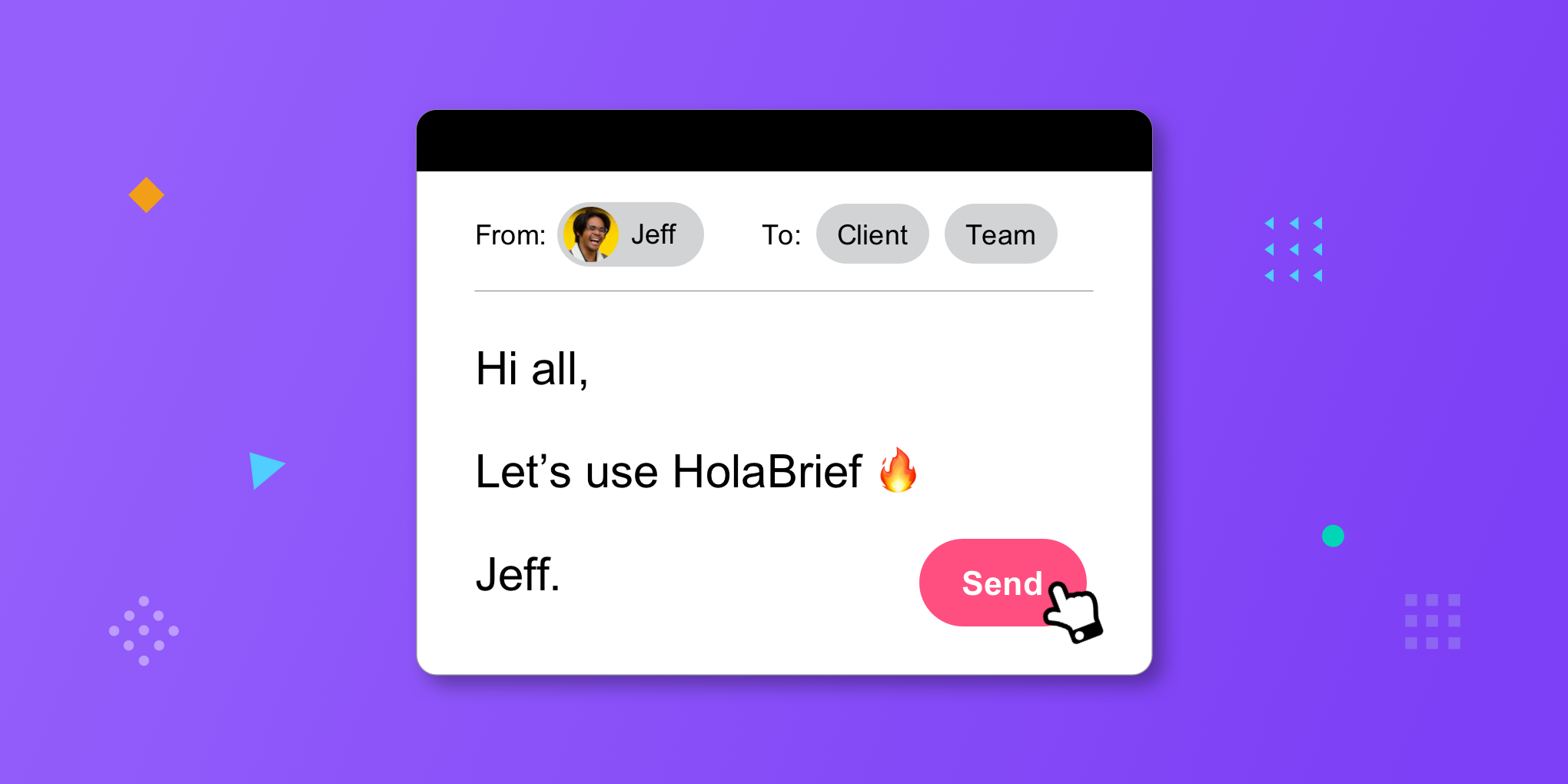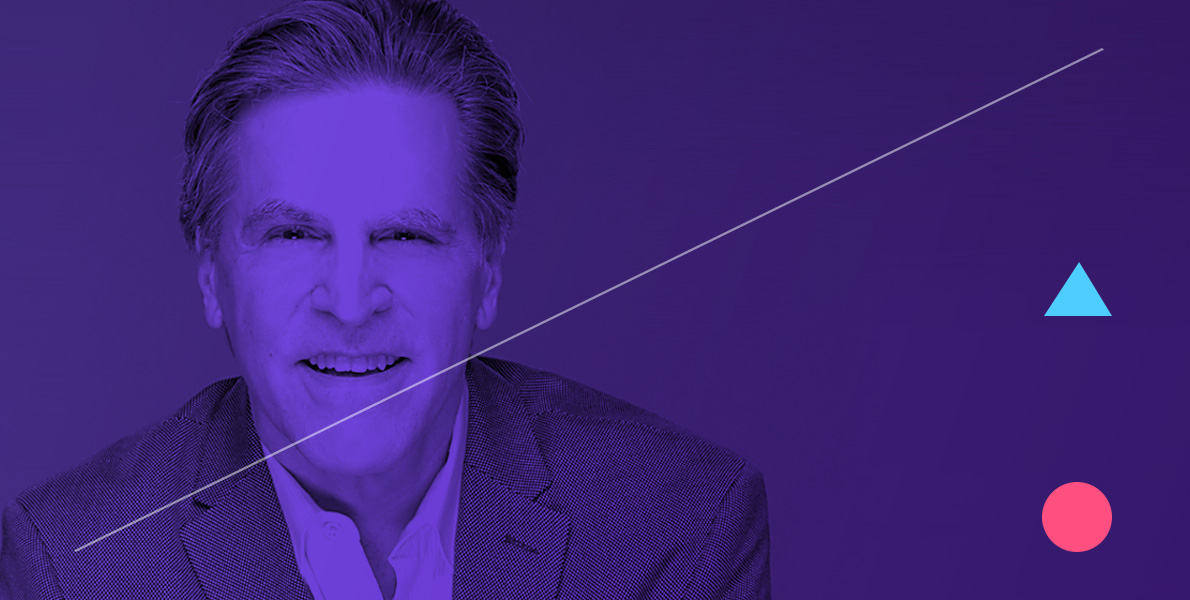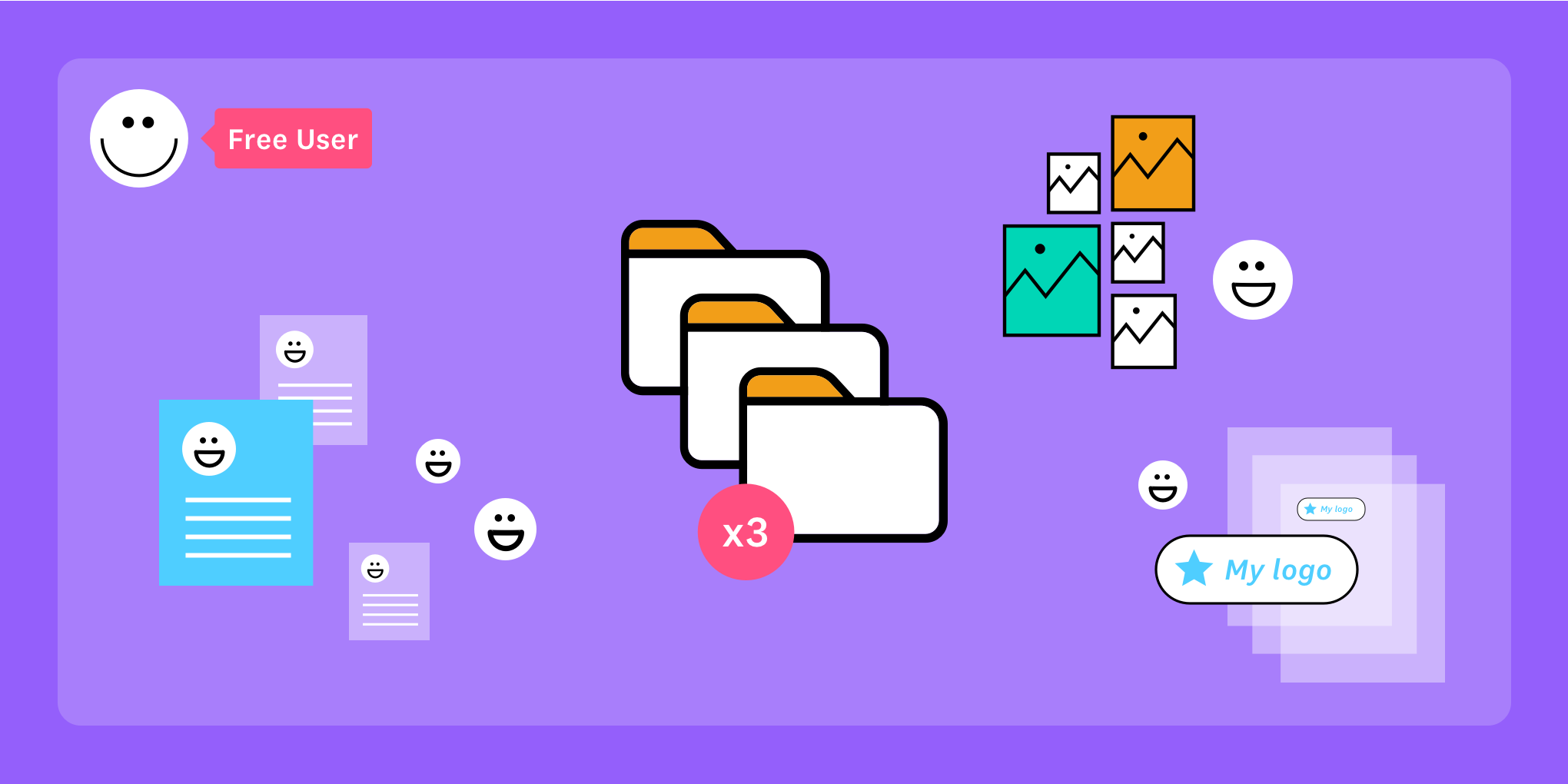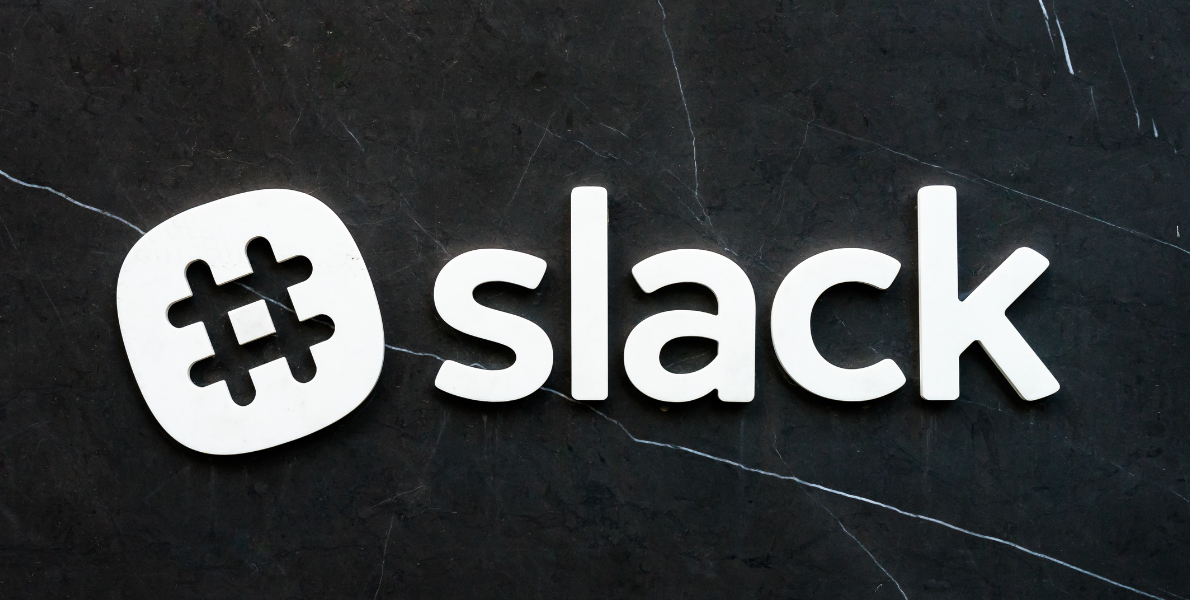“Design school doesn’t teach the strategic language that is now essential to getting your job done.”
Writer, speaker, and educator, Douglas Davis is on a mission: to make sure every creative professional understands the language of business. Because as you might already know: remaining relevant as a designer takes more than creativity!
Douglas Davis – currently associate professor within the Communication Design department at New York City College of Technology in Brooklyn – fills that void and teaches left-brain business skills to right-brain creative thinkers.
It all started in 2006 when young Douglas as Associate Creative Director got offered to start his own business inside the advertising agency he was working at. Without any business or marketing experience, it was possible to be spot on the forecast but completely off strategy. "I didn’t have the business vocabulary to be anything more than a really good order taker.”
This experience was a pivoting moment in Douglas’ career. Now fast forward 2019, Douglas is in the unique position of being able to translate business concepts to designers or articulate design thinking to business people.
His hugely popular book Creative Strategy and the Business of Design has helped numerous designers out there to understand the language of business, stay relevant, gain new clients, and grow the relationships with existing ones.
In this interview, Douglas guides us past early lessons learned, shows us how strategy hands designers the tools to become more valuable, and hands out business advice every creative professional and even designers fresh out of design school can benefit from.
In the end you’ll get rewarded with a little brainstorm session we did with Douglas that had a mind-blowing outcome. So read on and be inspired!
— In your book Creative Strategy and the Business of Design your mission is for creative professionals to understand “What the people across the table are thinking, in order to think how they think to do what we do.” Was there a turning point in your career where you realized that you could mean way more to your clients and deliver them a full package of strategic services on top of your design work?
Yes. There were several points. Keep in mind that my point of view in Creative Strategy and the Business of Design evolved over the range of experiences I was having early in my career.
So the first instance was as a young ACD and director of the new digital arm I pitched and started within JWT New York (now Wunderman+Thompson). My technology partner and I were pitching mobile websites and rich media expandable banners way back in 2006. To put this into context, think back to the days of the Motorola Razr flip phone and Nokia “candy bar” phones. You know the phase where smaller was better. As the youngest people in the agency, we knew mobile was the next big thing, but there were two things I didn’t understand working against us.
- Mobile websites were an unproven emerging media capability that
- Did not have the adoption numbers because there was no single device that could help justify our position. Cool but why in the world would anyone want to look at the internet on their tiny grey display by clicking through numbers to get a single letter on a keypad. A year later Steve Jobs would unveil that device. Ultimately, it was great to show clients what we could do with rich media expandable banners or that we knew html well enough to view a text website on a phone. However without the understanding that their existing objectives needed to be met with existing customers, none of our forward-thinking mattered. This is the first time I saw that it was possible to be spot on forecast but completely off strategy. Once I realized this, I saw so many other situations where I flat out didn’t have the business vocabulary to be anything more than a really good order taker. And then I stumbled into a strategy session.
— How do you empower a creative designer to grow into a business?
This question is a big one. In the example above as a young talented designer, hired as a freelancer coming to work bored every day, I was empowered to start my first business inside the agency. I had 5 years of digital experience by that time so it didn’t scare me when the account manager ran into the conference room screaming, “the client wants a website!” As a result, I could tell the CEO and ECD exactly how much money we left on the table the three months I came to work observant but bored. In this scenario, my youth and experience met opportunity, and the result is that I was empowered to start up the digital business. In this case, youth was an advantage. We knew how to manage a team of remote freelancers, pitch in doing the digital work, and pitch the work. The challenge was that in this case youth was also a drawback and we didn’t have the operations experience to recognize what we didn’t have. The CEO and ECD didn’t understand that we needed the same resources the traditional side of the business had, a digital media planner, digital traffic manager, and a digital project manager. Without that, we had a digital designer (me) a web designer coder (my buddy), and freelancers but no organizational support.
So in this example, a creative designer was empowered to grow into a business. That part wasn’t the problem, what we didn’t have as a digital start-up was business or marketing experience. This is where I fell into the gap my book identifies. In design school, many of us were taught the tactical parts of what should be larger strategic decisions. The problem is that design school doesn’t teach business so when we became one we were completely unprepared. I think this is a story that many creatives can relate to in one form or another and there are lots of lessons in our failures.
I hope this fully explains why It took my first two responses to answer your first question.
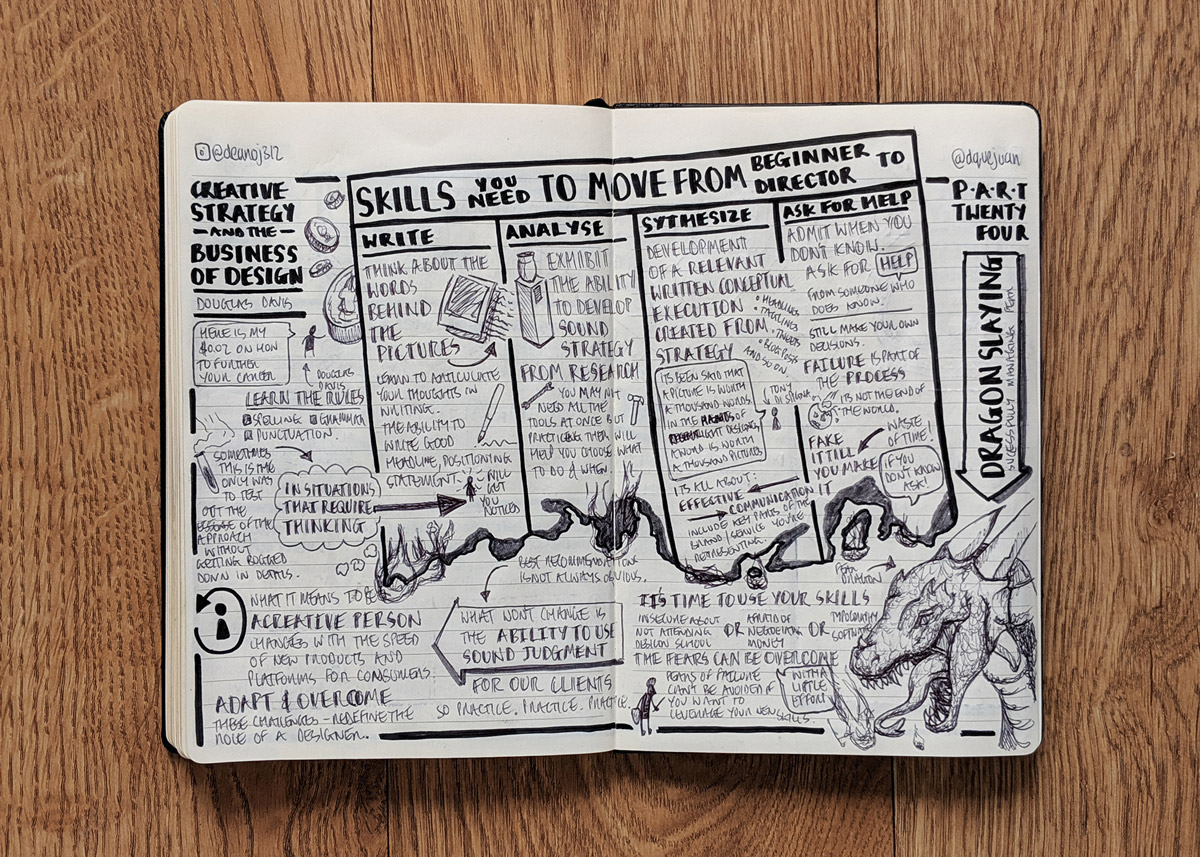
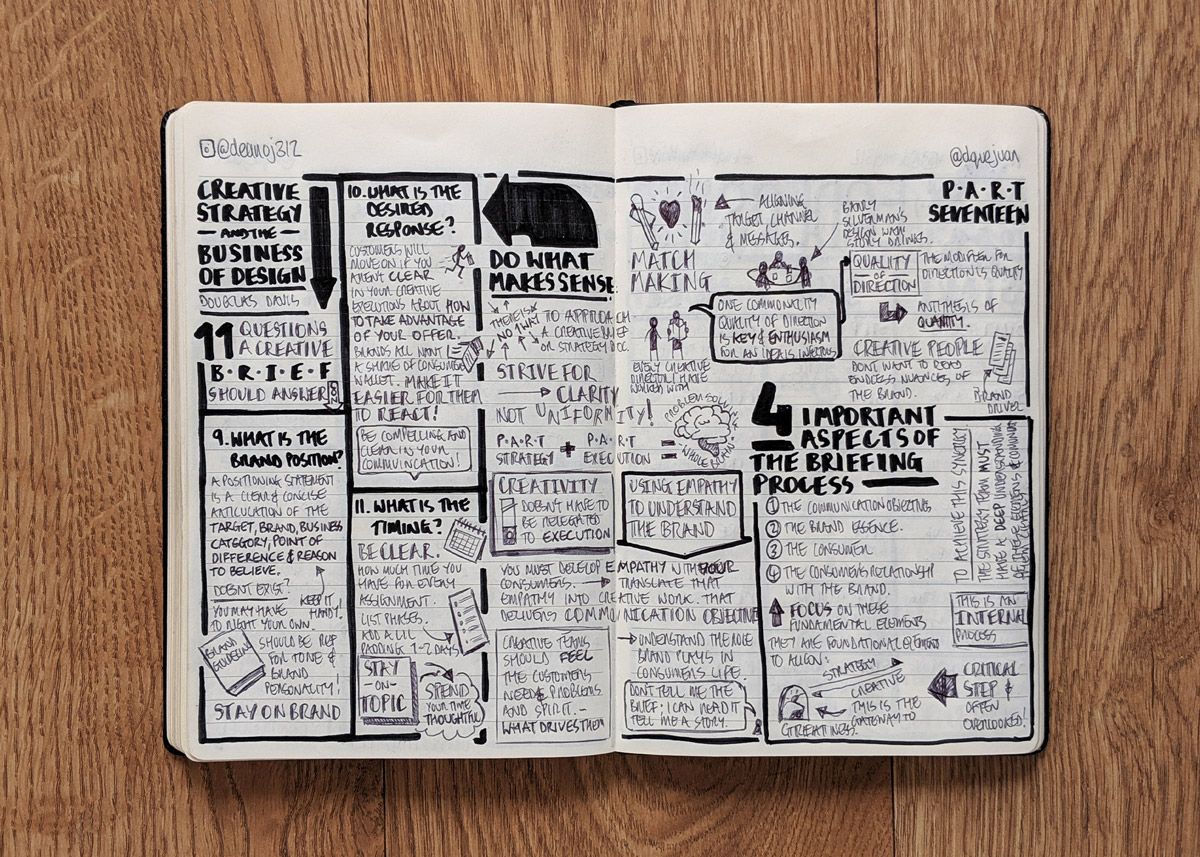
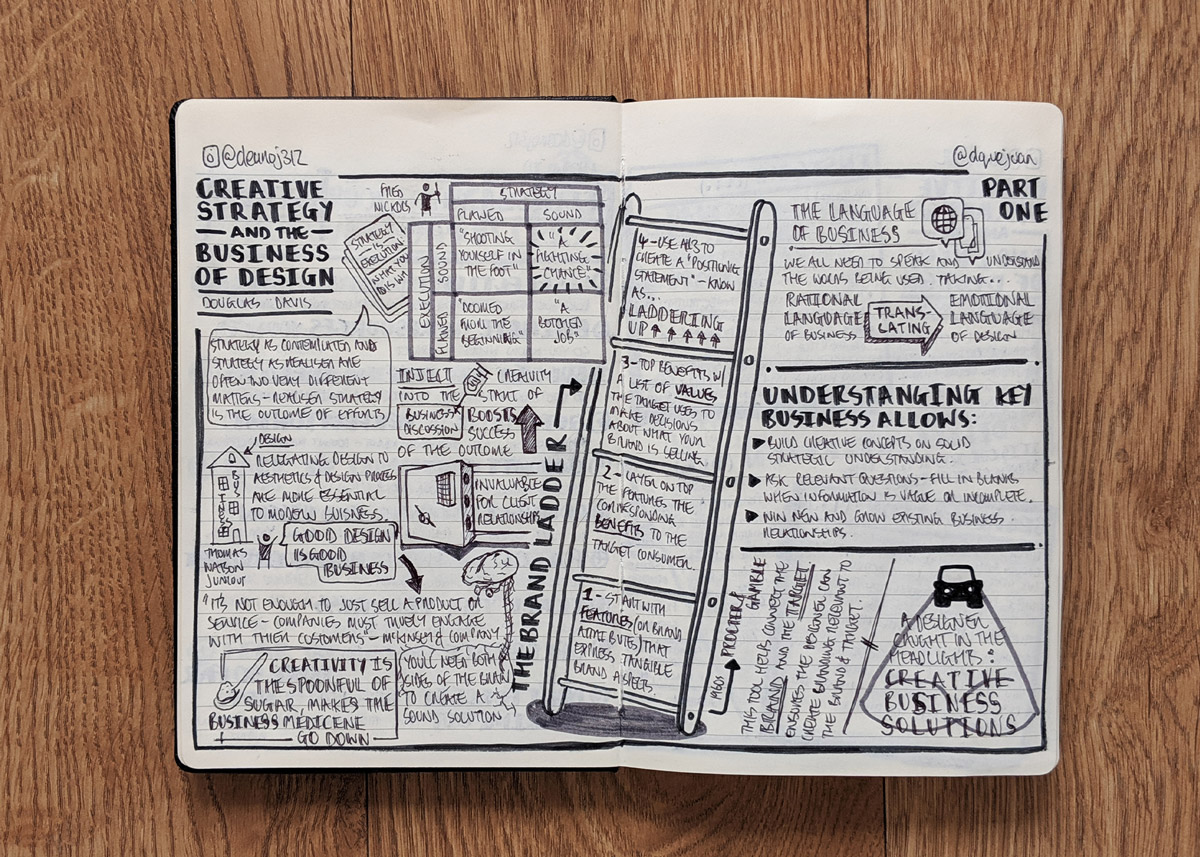
Illustrations by Dean O'Callaghan
— What would you say are the benefits of using a strategic approach when working on the design?
There are so many benefits, one of which is clarity on why we are in the room. This clarity in the communication process should be the thread that runs through the creative brief, the internal presentations, the allocation of resources in the pitch, and managing the account. I’ll take the methodical strategic creative group over a confused and frustrated creative team any day.
— What are the disadvantages of not taking a strategic approach?
There are so many disadvantages, one of which is a confused and frustrated creative team. This team will not keep the account and this group will not keep their designers. Now what leads up to that is what I mentioned in answer #2 a process where everyone has three jobs. An unreasonable amount of revisions. This is unsustainable and there will be an unreasonable amount of revisions guaranteed. The work is creative for creative sake vs a creative business solution that is an answer to the root business problem.
— Features vs. Benefits vs. Values. Why is understanding the differences between these so important? And how can we turn the benefit of the product into a value?
It is essential for creatives to know the difference because it is our job to connect the brand and the target. I like to say that designers provide a spoon full of sugar that makes business and marketing objectives palatable to the public. They can’t go to the market without us. Therefore when we wade into strategy and use tools like the Creative Strategy Framework in Chapters 6 & 7 to help us align all the elements, we can clarify the difference in our heads. I like to point out to my teams in strategy sessions using the framework, that the target in column one, is concerned with the benefits that the product brings to them. The facts on the brand, product or service in column 2, align with the features the brand offers that deliver those benefits to the target group. Generally speaking, this is where basic utility happens on a transactional level. I need this so i bought that. You cross over into a deeper emotional loyalty or brand preference when you can identify the values in a brand’s reason for being and align them with what a target’s values.
So back to the original question, I don’t think creatives turn a product benefit into value, for a brand or a target. I do think that creatives can listen and question to discover values and then understand the way that those values factor into a brand’s communications or a target's decisions. If you are advising, activating, or managing a brand, I’ve found success looking to their mission statement to extract their values to inform how to speak to the public (through design) about the benefits of choosing their products.
If features, benefits, and values aren’t aligned, aren’t true or are miscommunicated, then the moment of truth comes when the way a brand speaks about itself doesn’t match with the experience the consumer has. If we don’t understand this at our core, then creatives will be the spoon full of vinegar as well.
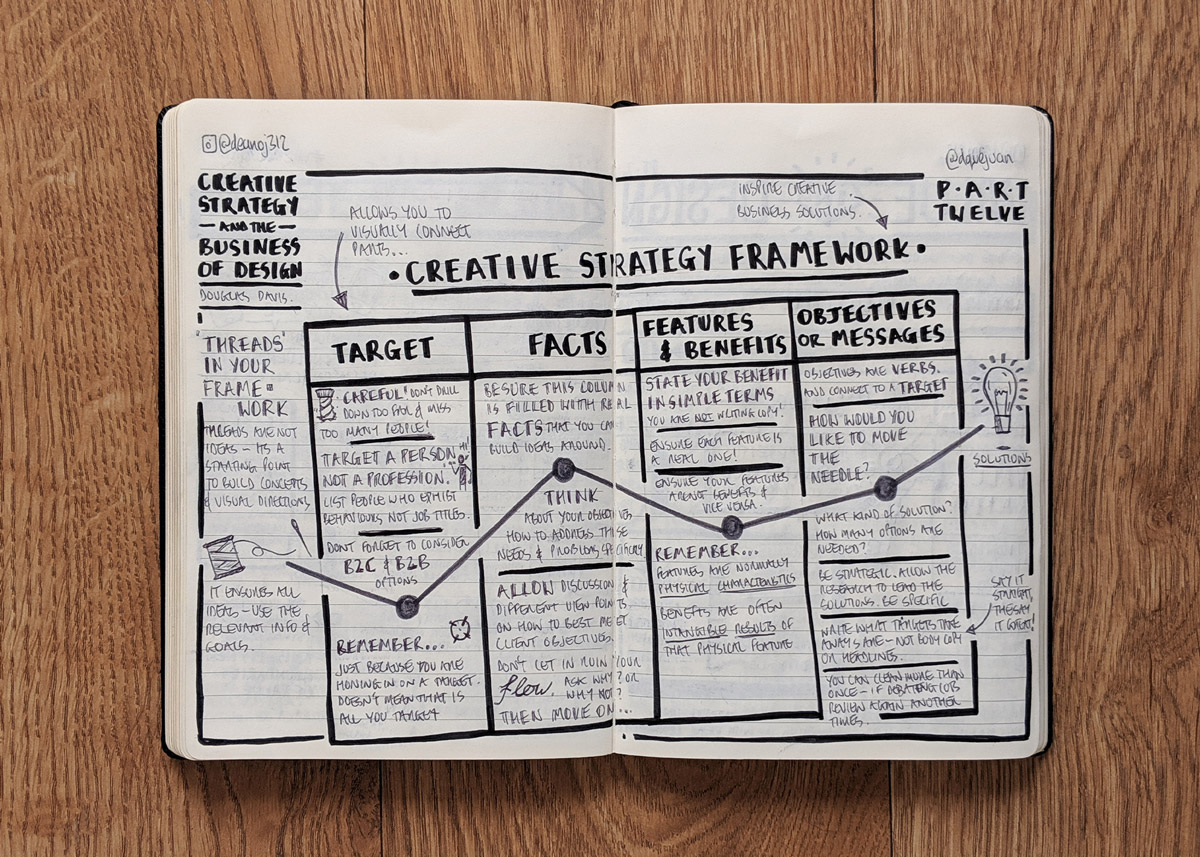
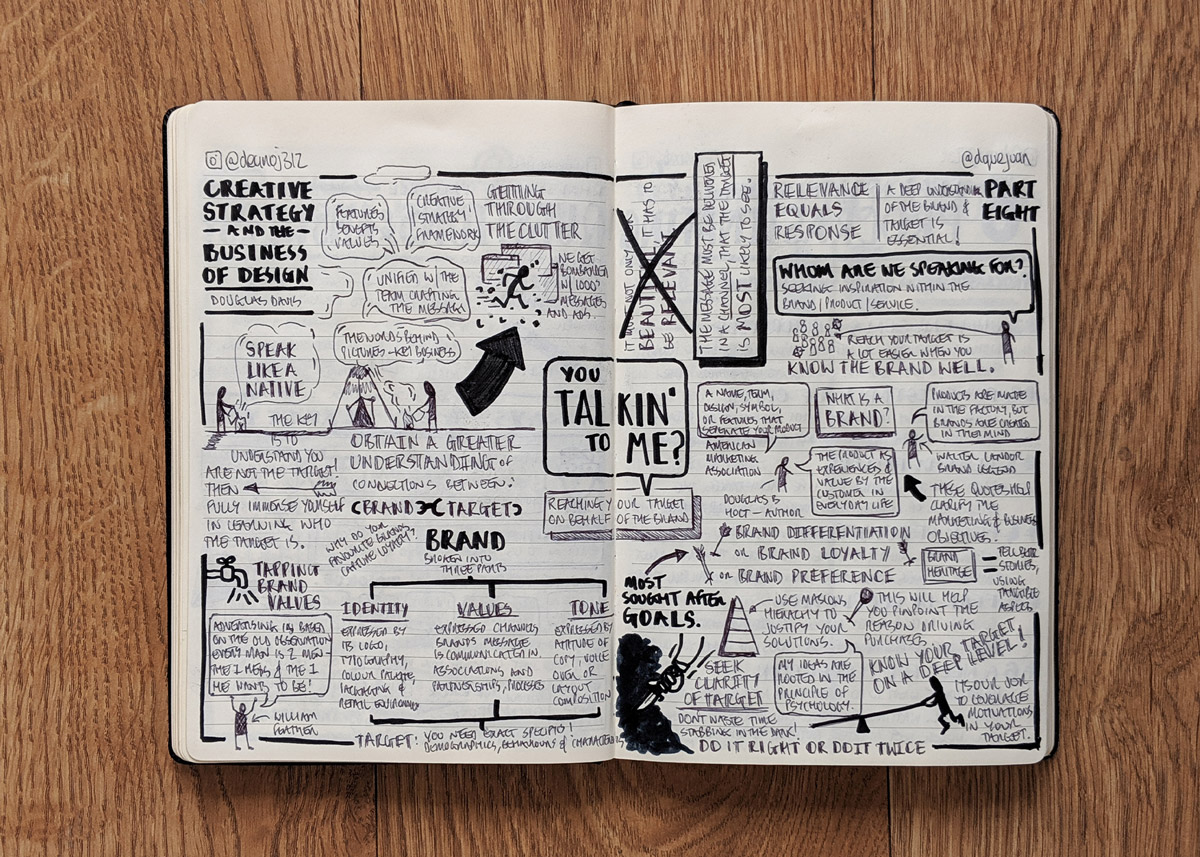
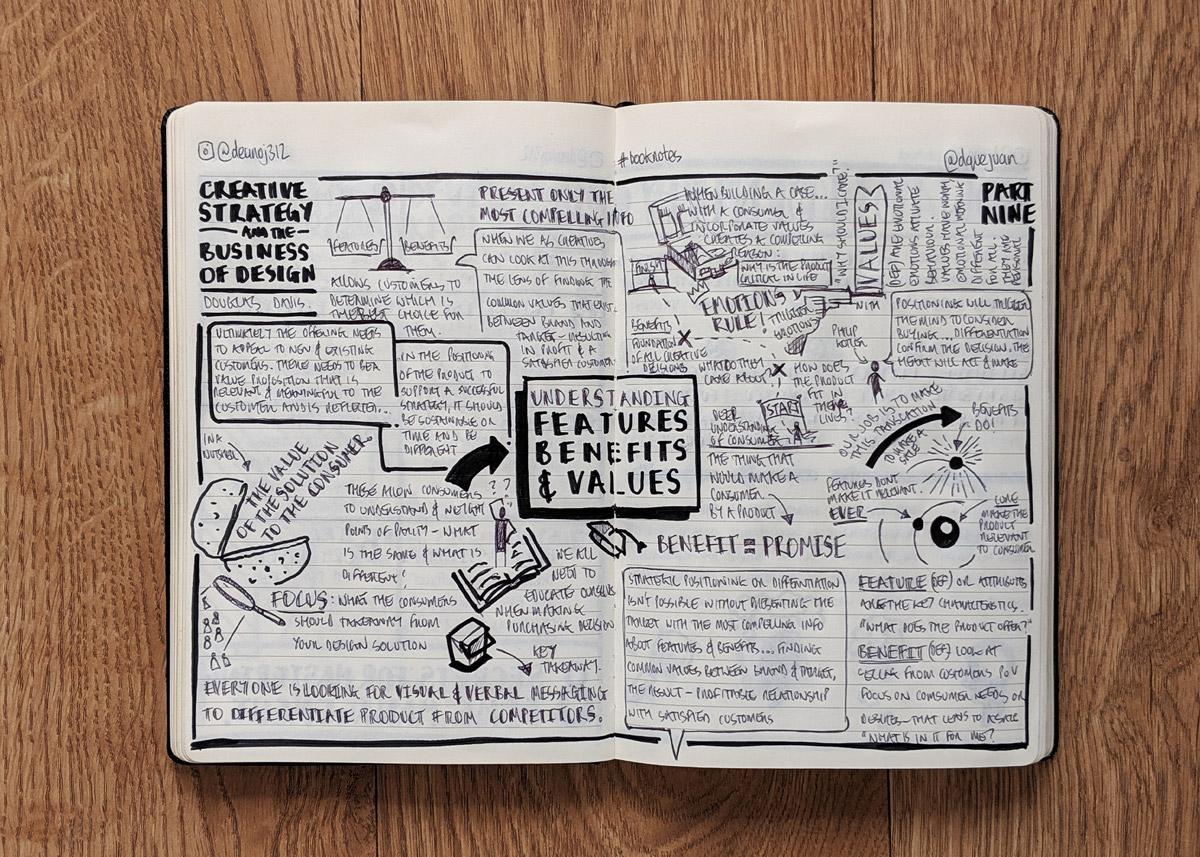
Illustrations by Dean O'Callaghan
— In the very interesting podcast you did with LogoGeek you mentioned “...as designers, we are inherently teachers because we have to teach our clients why this is the best way forward.” But how to persuade or convince the client that this is the best direction to move forward in?
This will always be situational. The only way I can answer this in a way that will be relevant to all situations is to say, designers need to think about how they think. Define your “they” in the situation and step into his or her shoes to understand the factors and limitations associated with the way they are defining success. From there creatives must do their diligence to offer solutions tied to the range of scenarios they are facing (I speak about scenario analysis in the book in the context of pitching new business). That is all we can do because 9 times out of 10 we were not in the boardroom with the client discussing whatever problem that led to the client calling us. As good as we are, we will never have all the information and that is the last bit of guidance I can offer. Keep in mind that listening is your greatest asset because the “best direction” is relative to who’s perspective and what metric the client needs to move the needle on. If you can’t draw that information out of the client in the room because you’re convinced that you know what is right, you’re running the risk of missing the partnership that could grow an account over time for “being right” in the short term. If you are listening, you’ll know when new information would warrant a pivot in your recommendation or when to question the answers the client comes to you with.
— We talk about using strategy during the design process to guide the client towards the right solution. And how can we apply strategy when presenting to clients?
I like to begin by stating the problem in the form of insight. Not the brand’s goal or reason for hiring you, but the problem the consumer is having that would cause them to seek out your client’s brand. Using the threads from a Creative Strategy Framework will ensure that you developed everything from relevant information, so present it that way. You’ll know when every element is relevant because you can defend your work without being defensive.
Executing with strategy is so powerful for creatives, because it helps us deliver creativity that is on brand, on strategy, and on message.
And that is your job to explain. It is much easier when you’ve organized the chaos using strategy, and at that point, the work can speak for itself. Your job isn’t knowing the right thing to say, it’s knowing when to stop talking.
— Designers sometimes get frustrated when clients give subjective feedback to their designs (think, make the logo bigger or change the color to my favorite color). Is it the client’s fault? And how can designers avoid this?
You can’t avoid this. You can manage your own expectations by listening and learning the client early on. Sometimes it isn’t the right fit but you’ve got to identify your deal breakers long before walking into the meeting and be definitive about walking away when you get to that point. But this is where I like to challenge designers because if this gets under your skin, then you haven’t had much client-facing experience and you won’t be in business long. Take this opportunity to understand and respect the perspectives outside the creative team (read the Foreword in my book written by my strategy mentor Dr. Marjorie Kalter to see why).
— A client you’ve been eyeballing for a while approaches you to do a re-branding. What are the crucial steps you go through with your client to bring that project to a good end, one that you can be proud of?
I’m a fan of the industry as well as a practitioner. In this scenario, my eye-balling has probably led me to understand the client’s position in the landscape and identify the opportunities relative to their competitors. I like to know what I think before I'm asked if I wanted the business, I’ve already been thinking about what would generate the types of press releases that would position the brand where I’d like it to be. Everything else is building trust and assembling the right team to make that a reality.
— In one of our favorite podcasts, Let’s talk Branding, you mention that a creative brief ideally should inspire a thousand pictures. How should this ideal brief look like and what is the advantage creative professionals have over corporate teams in setting it up?
Each creative brief is relative to what is being solved but I think our advantage is that we are the ones tasked with bringing the experience to life. This isn’t abstract or foreign to us and therefore the tension that produces creative sparks is within our control.
When we also understand the language of business then it is a huge advantage when it comes to commanding it to inspire the solutions.
On a practical level, when a strategic creative is writing the brief, you’ll know because each word is there for a reason. No rambling or putting in everything under the sun. Chapter 10, in the book is called “Where’s the Map” and has a structure with the 11 essential elements to a good brief in my opinion.
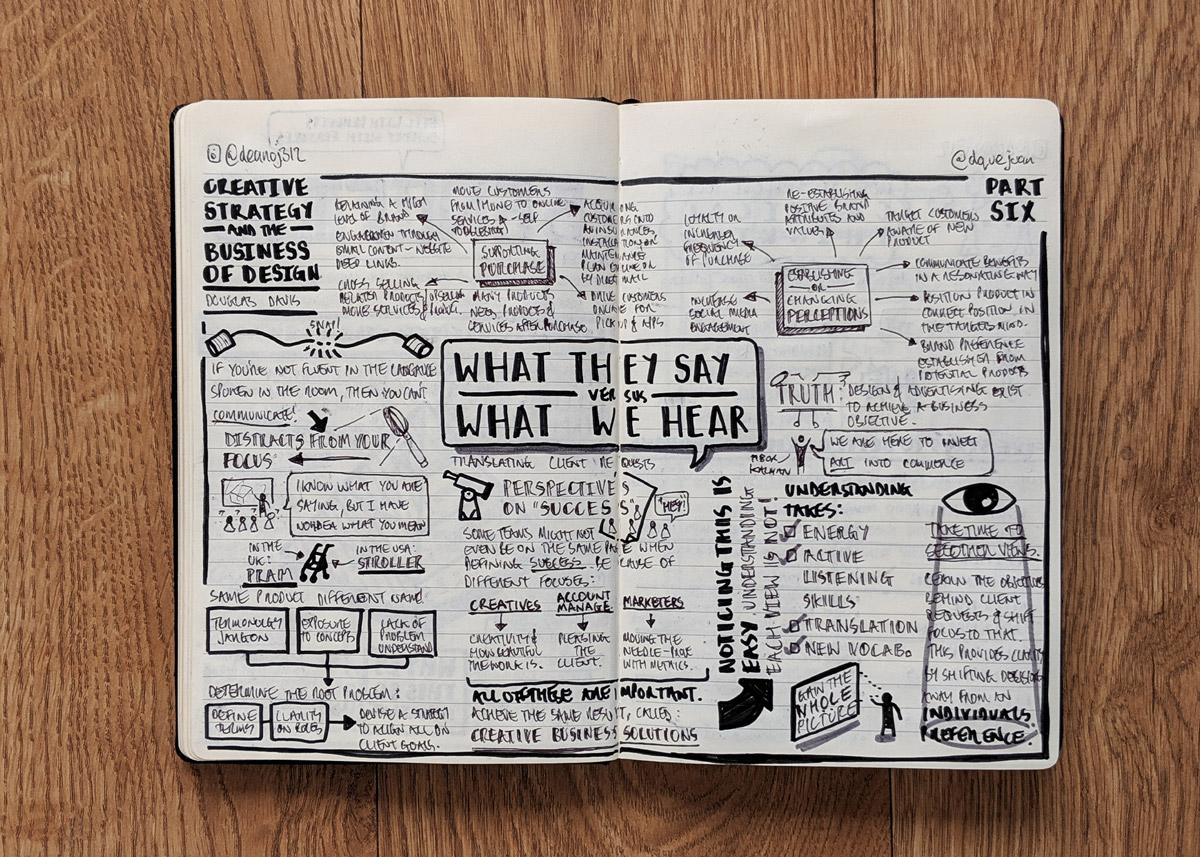
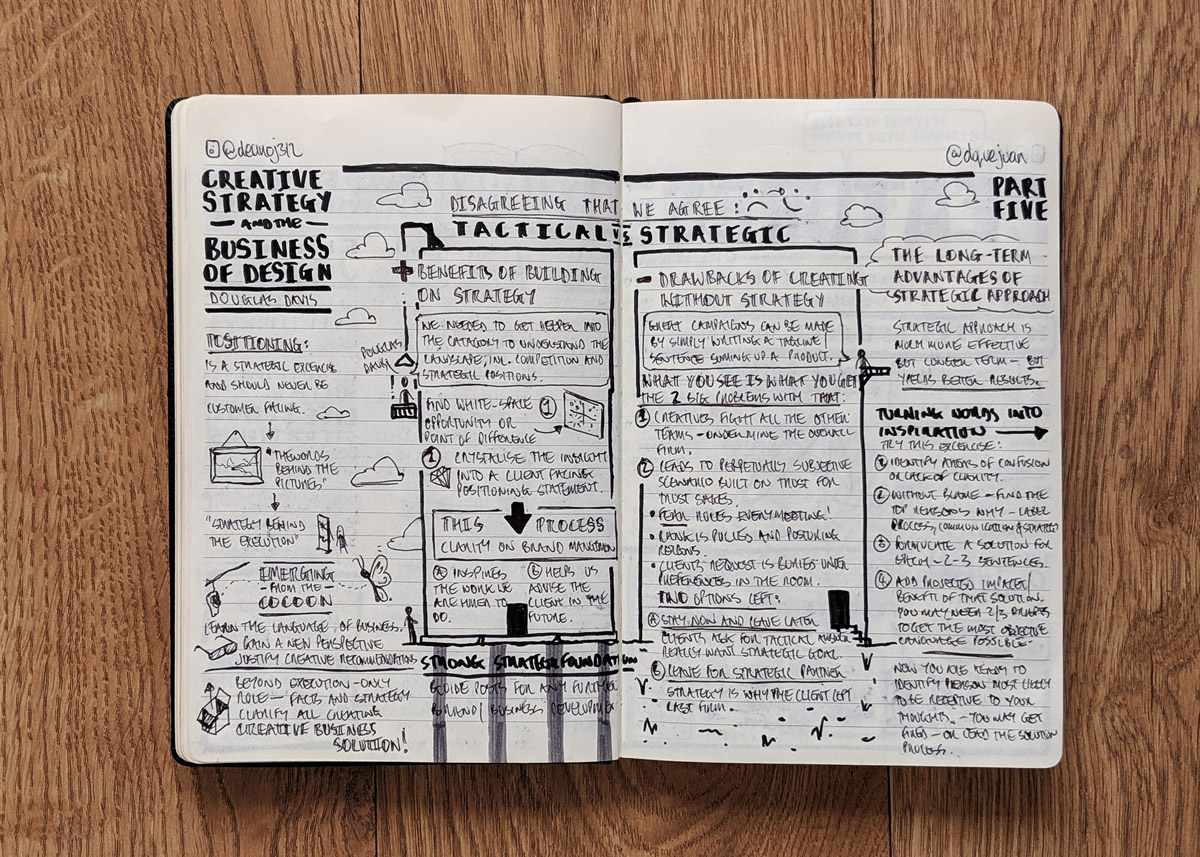
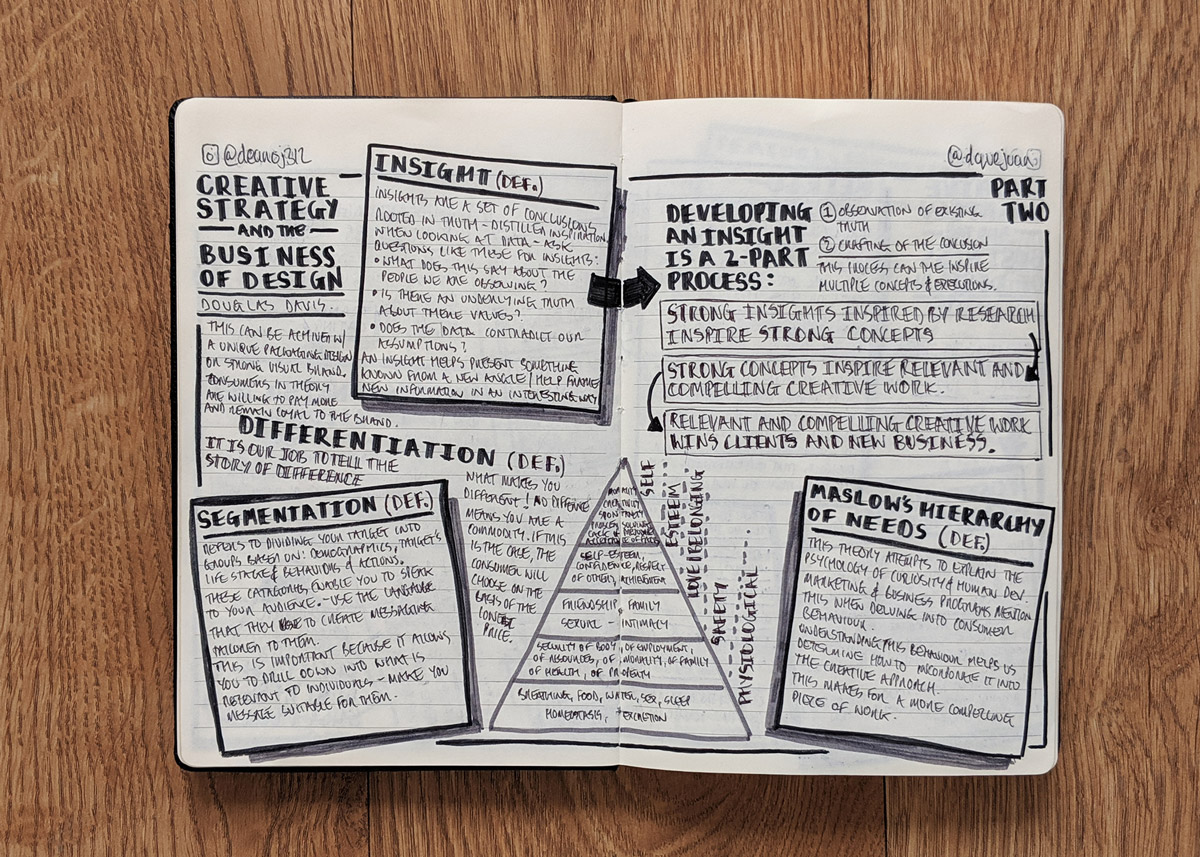
Illustrations by Dean O'Callaghan
— What advice would you give to a design student, fresh out of design school entering the professional market?
If you can do this for 5 years, freelance, full-time, getting hired, getting fired, good economy, or through recessions, then you can make this a career. Being able to do all of that will take a local creative community that consists of your professors and peers who you can do things with to reinforce your decision to be a designer through the doubt and insecurities. We all have to deal with that voice in our heads.
During low times or good times, you must work on your craft and take classes or learn something new to challenge yourself.
This will help a great deal with your confidence. You don’t need anything but your imagination and effort so give yourself assignments to stay sharp. Chapter 15 in the book is called, “Portfolios are like cartons of milk,” and that’s because the assignments inside will help your portfolio stay fresh. Every 6 months you will need to redesign your portfolio. Just like you change your hairstyle or clothes, typefaces go in and out of style so it’s up to you to stay current. Do not quit or let fear define what is possible. Lastly, fear is a dragon that won’t shut up, to silence it, means you have no other choice, Slay (go to thinkhowtheythink.com to see the award-winning visual essay).
How do you see the future of freelancing? What do you think would be needed to help this scenario manifest?
In America and maybe globally, I think the trend of employers offering more contract positions to avoid paying the cost of health insurance is going to lead to freelance becoming the model for careers outside of creativity as well. The upside for us is that we’ve been working this way for a long while so it isn’t as scary for designers to not have stability. The opportunity is that it will be easier to find partners that can extend your ability to offer clients full-service solutions beyond what you could do alone. The benefit of the internet is that if you tweet or post about what you do from a thought leader standpoint, you’ll catch eyes, and within that attention are partners.
— For this last one, I’d like to do a mini- brainstorm with you. Clients might not be up-to-date in what happens in the creative scene. As we are entering a new era of designers who self evidently offer strategy as part of their skills, what are your suggestions in how this new role definition could sound like? How might we inspire our clients or make them aware of this new profession that is taking shape?
I’ll answer the last part first by saying that we should be working out loud. Meaning tweeting and when possible working every now and then at a cafe or area of town known for being where things are happening. In New York City that could be in Brooklyn, Soho, Chelsea, or the Village. I’ve done this for years and each time someone can see my screen or hear me with freelancers, a potential client raises their hand. The equivalent of this on social media brings emails, DMs, and RFPs. This new era of strategic creatives is less about labels than it is about the results made possible when clients, marketing, or business colleagues partner with us. It looks and sounds like a boss to me.
—
Thanks, Douglas for your valuable insights into the business of design. If your interest is triggered, we totally recommend getting his book and making it part of your library. Follow his every move on Twitter and Instagram, join his online courses, or simply snoop around his website and get inspired to work on those business skills!

